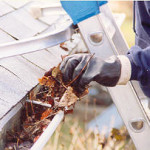 Ladder Safety
Ladder Safety
Life seems to come at us pretty fast. We often feel there is not enough time in the day to get things done. This can happen at work or at home. At work, we have rules, procedures and checklists to guide use on the task we are performing. Not so much the case at home. Many employers encourage their employees to take the knowledge from work home with them. One thing that people typically have to deal with at home and not necessarily at work are ladders.
When it comes to tasks where ladders are needed, be sure to allow yourself enough time to complete the task. You do not want to be in a hurry when using a ladder. When you are in a hurry, that is when you will be tempted not to move the ladder to the next position or you may try to stand on the top of an A frame ladder where it says “THIS IS NOT A STEP”.
Most of the time at work we plan out the job. Why not plan out the jobs at home? Do you have the proper tools, in this case the correct ladder? Do you have the proper personal protective equipment (PPE) for the job? We should ask ourselves the same questions at home as we do at work.
For instance, every spring and fall, the gutters on the house may fill up with leaves. Cleaning out the leaves can be a chore. Some houses have gutter guards that prevent the leaves from getting into the gutter. Many houses don’t.
What can we do to reduce the potential of getting injured while doing a chore like cleaning the gutters?
Eliminate Ladder Shortcuts!
The critical piece of equipment is a ladder. There are several choices for a ladder. The first choice is not “it’s the only ladder I have”! There are basically two types of ladders with several marketable variations on each choice. One is a straight or an extension ladder and the other is an A frame ladder. Each can be used to clean gutters, but the height of the gutters is a consideration for which type of ladder to use. A frame type ladders can be a good choice for single story height gutters, where as an extension ladder would be the best choice for a second story gutter.
Another consideration when using a ladder would be the surface where the ladder will be placed and what obstructions are in the area. Both types of ladders have feet that set on the ground and help hold the ladder in position. When setting up any ladder, the feet should be placed flat on the ground and you must be mindful of uneven surfaces and uneven ground. A ladder should only be placed on level surfaces unless otherwise secured at the top or bottom and placed at a safe distance from electrical devices and obstructions. When setting up an extension ladder on grass, the feet of the ladder can be rotated to “dig” into the ground to help stabilize the ladder. Be aware that if ladder legs are not planted evenly, the ladder can easily torque and fall over. You always want to make sure ladder legs have no gap.
Once you have the right ladder, the use of the ladder is important. There are warning stickers and weight limit stickers put on all ladders by the manufacturer. Are these warning stickers legible? How many times have you been tempted to step on the very top step of an A frame ladder, even though there is a visual warning not to? “I just needed a little more height” or “I didn’t want to get down and move the ladder”. Typical excuses or shortcuts that we convince ourselves will be OK to do.
How many times have we reached or stretched beyond the safe working area of the ladder, maybe even to the point of feeling the ladder move? At work, there are policies and procedures that tell us what we can and can’t do, but at home, there are no such policies and we must be mindful to conduct ourselves in a safe manner.
Click here for a quick & easy to follow Portable Ladder Safety list from OSHA.
Taking short cuts may seem to get the job done quicker, and it might. But the consequences of taking shortcuts can be devastating. The minute or minutes it takes to re-position a ladder or get the right tool for the job, could prevent an injury that could be life changing and permanent. Do it right for safety sake.













